Czechs love řízek, breaded and fried pork Schnitzel. It’s a traditional dish commonly eaten in restaurants or easily made at home. Řízek in Czech is also known as Schnitzel because of our two neighboring countries, where German is the official language: Germany and Austria.

➜ What Is Rizek?
Vepřový řízek (plural řízky) is a Czech schnitzel, a thin slice of pork, usually about ½-inch thick. It’s tenderized, then coated in flour, beaten eggs, and finally in breadcrumbs. Řízek is pan-fried in a generous amount of fat from both sides until golden brown.
Interested in Czech cuisine? Discover more authentic Czech food!
➜ Ingredients
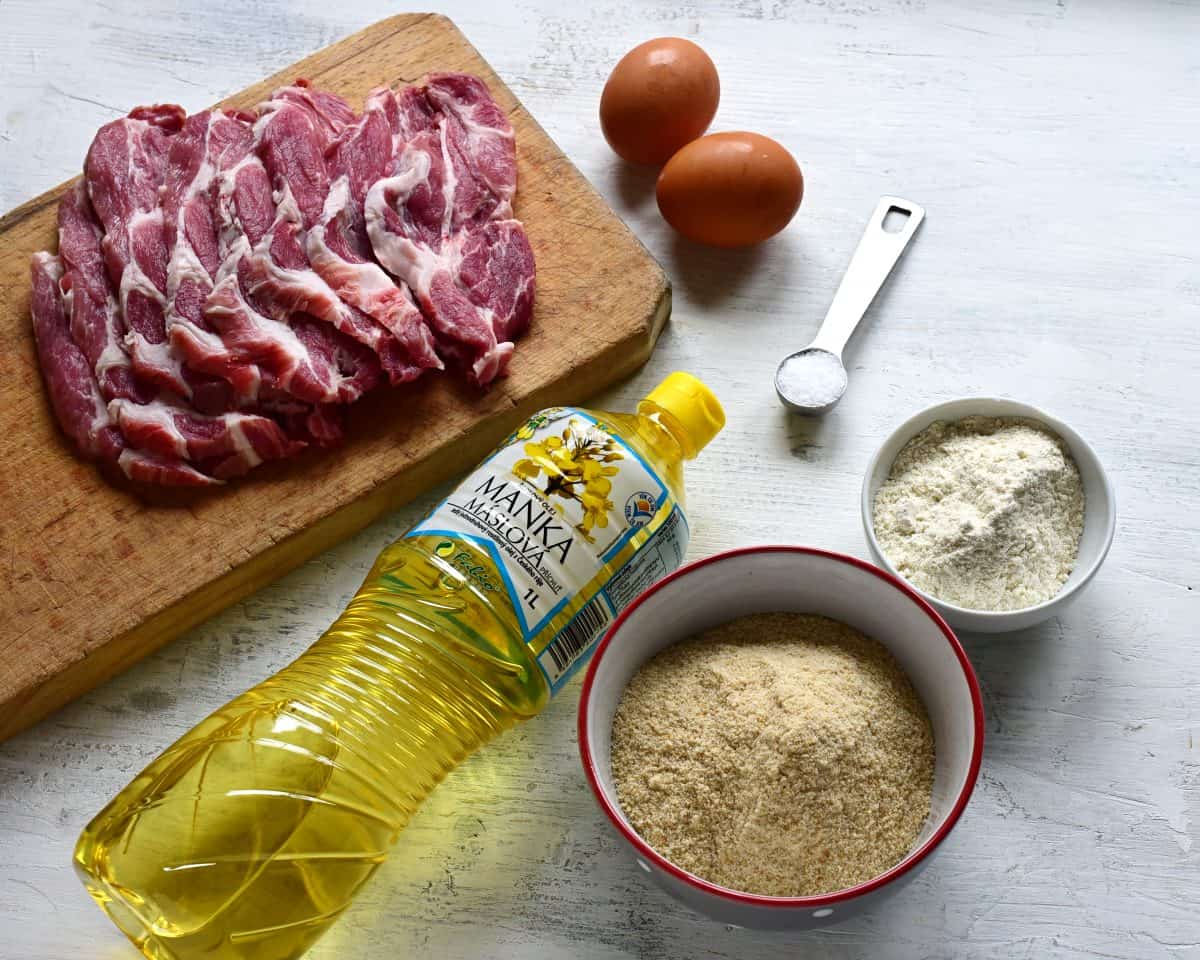
To make Czech řízek Schnitzel, you will need:
- Pork collar; our favorite pork for řízek
- All-purpose flour, eggs, breadcrumbs; to coat řízek
- Salt; to season the slices of tenderized pork
- Fat; to fry řízek; I use Canola (Czech řepkový olej), the best fat to fry řízek is probably pork lard or clarified butter
✅ You’ll find the exact amount of ingredients below in the recipe card, which you can also print out.
➜ How to Coat Rizek
STEP 1: Pound a pork slice gently with a meat tenderizer—season with salt from both sides.
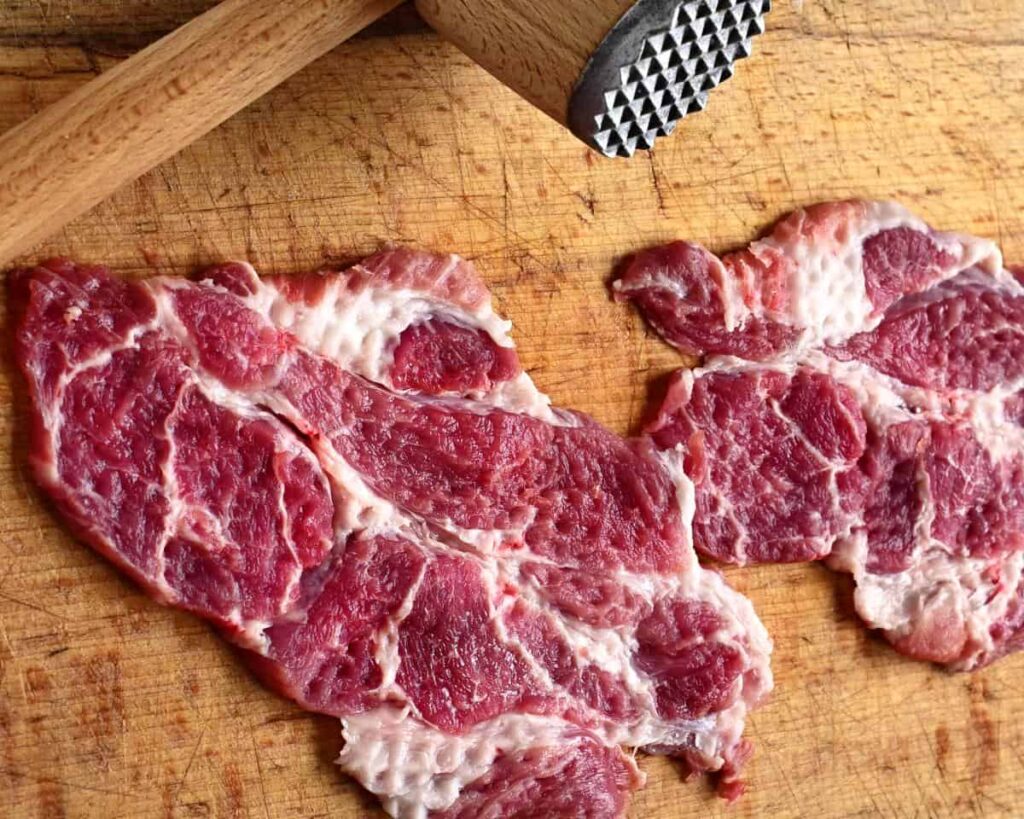
STEP 2: Coat the meat three times: Firstly in flour (photo 1), then in beaten eggs (photo 2), and lastly in breadcrumbs (photo 3).
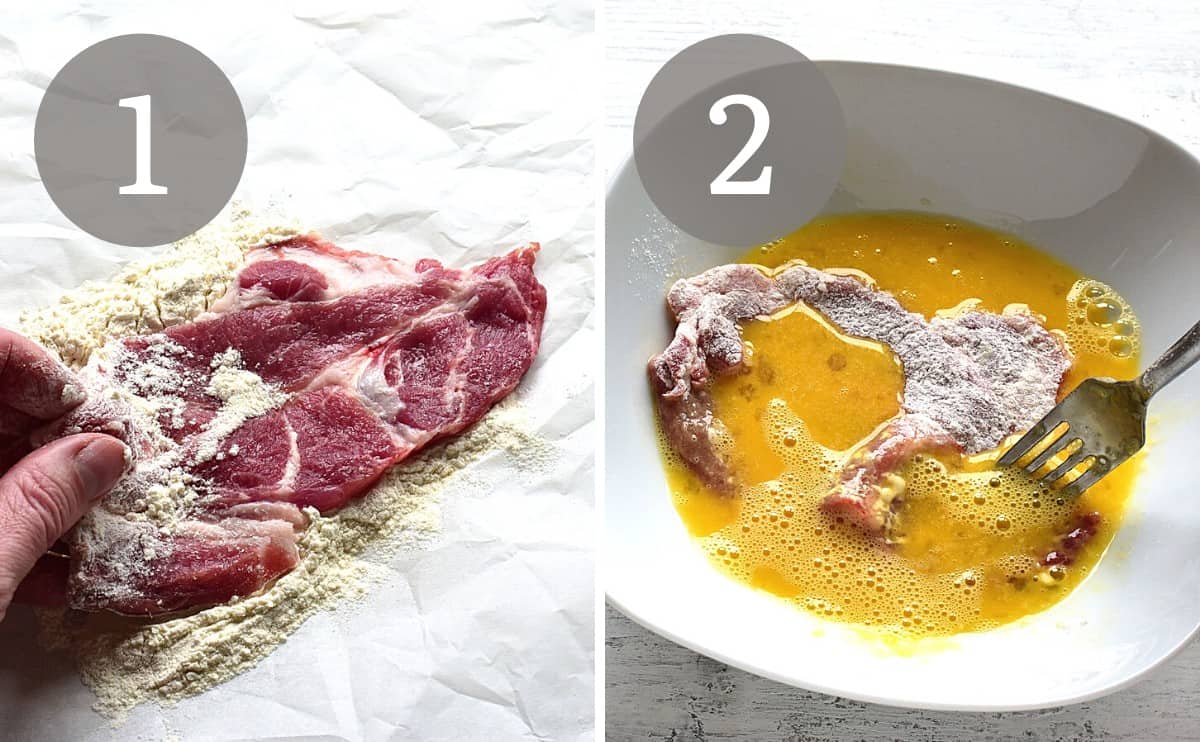
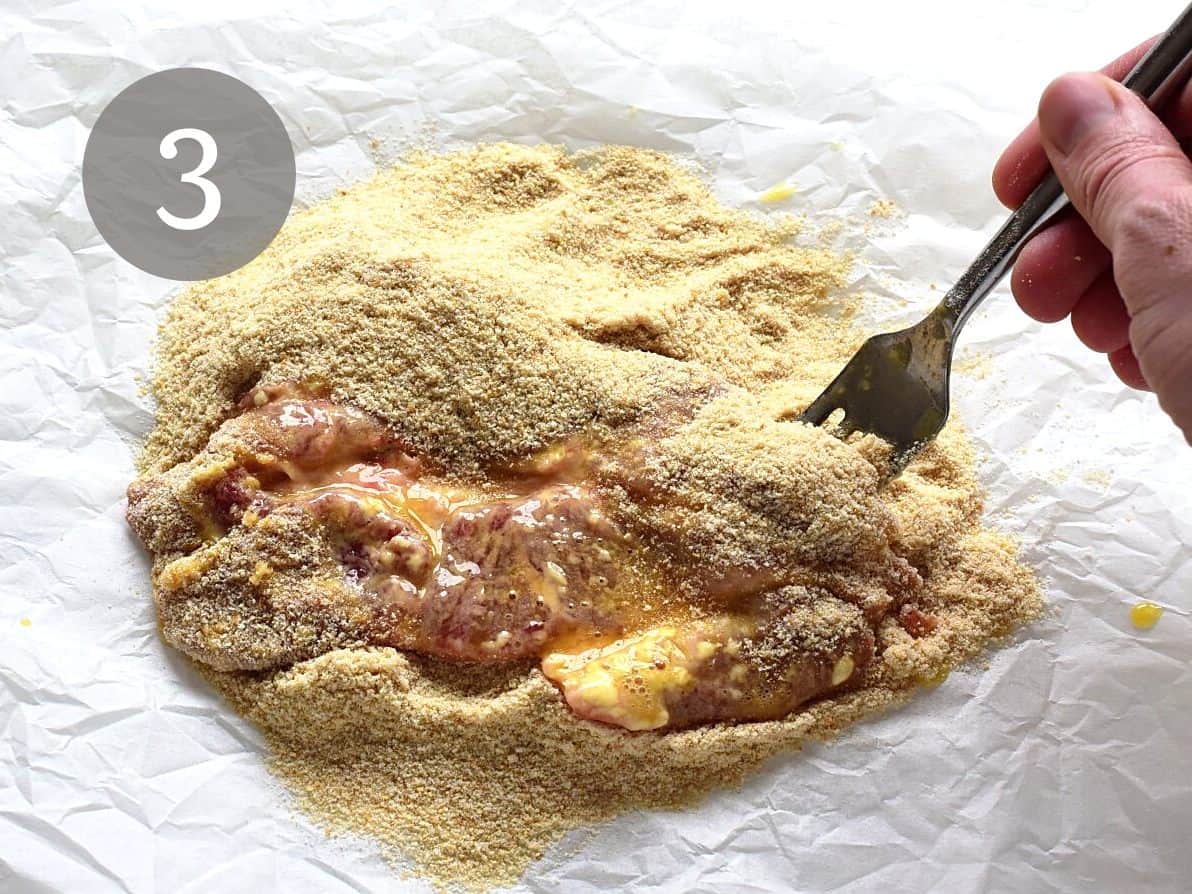
STEP 3: Fry breaded pork in a pan in a thick layer of fat.
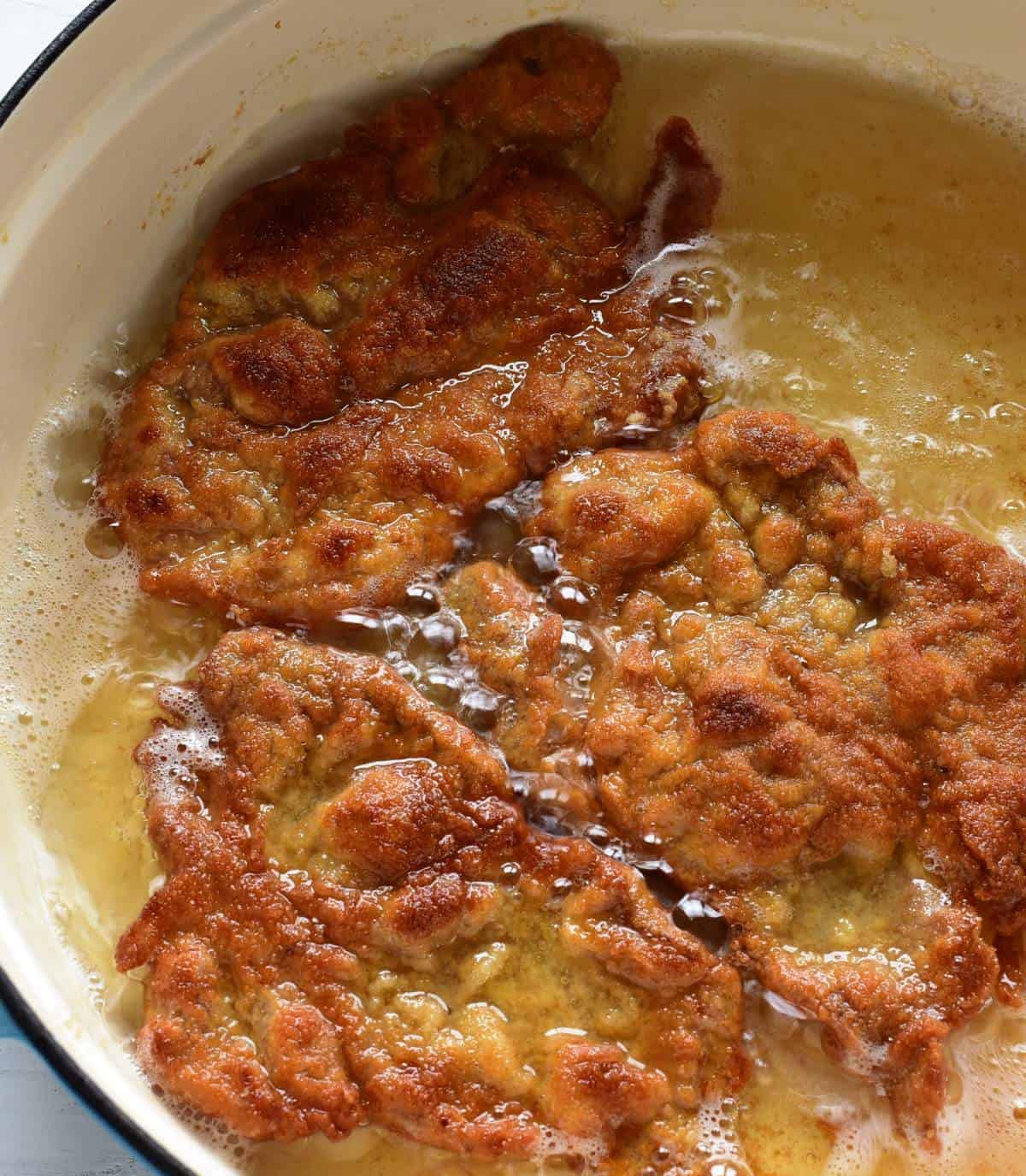
Coating the řízek pork must be done in a specific order, you can’t change anything. Czechs call foods prepared this way „v trojobalu“ – coated three times.
Not only řízeks are coated three times, but also another famous Czech dish: Czech fried cheese called "Smažák".
You could say that anything that’s fried „v trojobalu“, is loved by us Czechs.
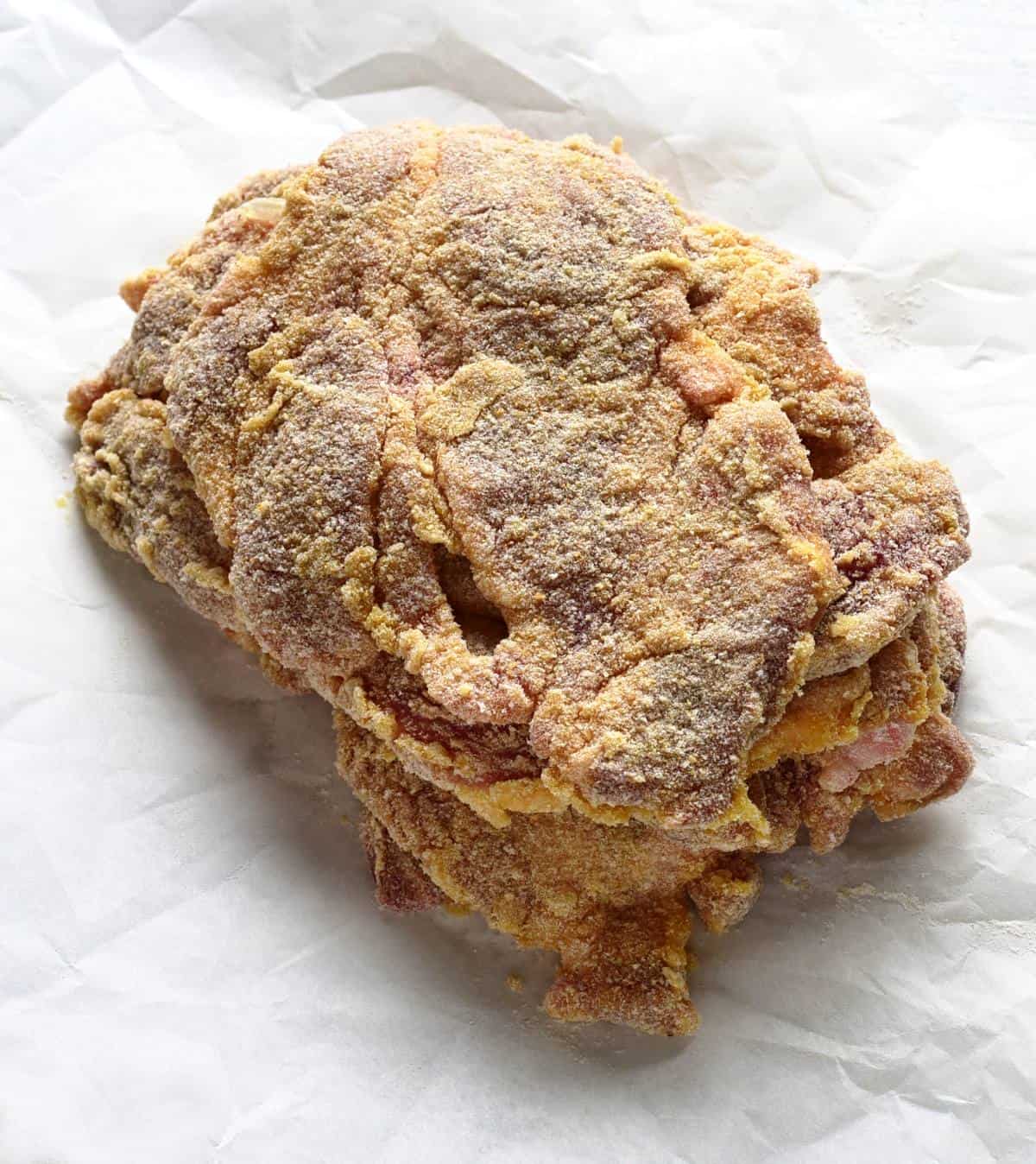
Řízky Schnitzels are highly appreciated by children and adults alike.
A typical řízek is made from pork. However, the chicken breast fillet variant is very popular, especially with children.
Chicken schnitzel (in Czech "kuřecí řízek") is similar to chicken nuggets, just in an XXL version. It is especially loved by children.
➜ Strouhanka Breadcrumbs
Řízek is breaded in breadcrumbs, in Czech "strouhanka". Czechs make breadcrumbs from stale rolls / white bread (rohlíky or housky). The bread must be completely dry, then it’s ground in a breadcrumb grinder.
I store breadcrumbs in airtight jars with lids so as not to get damp.

➜ Best Pork for Řízek
A traditional řízek is made from pork cutlets, but our family prefers pork collar because it‘s fattier and not so dry as pork chops.
I myself buy pork collars in a complete package, which I cut into thin slices myself.
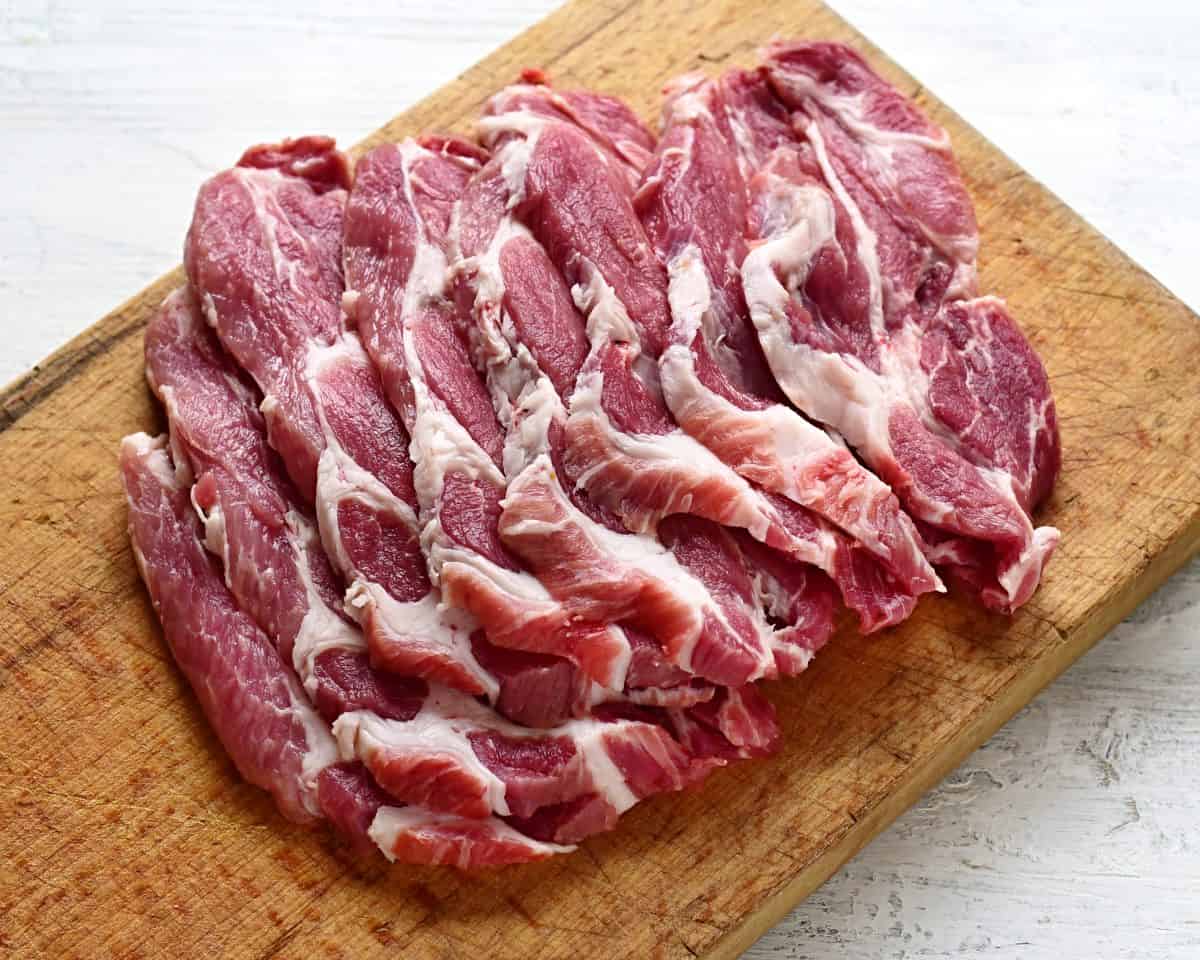
➜ Serving
Mashed or plain boiled potatoes covered in melted butter go the best with řízky. An elegant option for Sunday lunch is parsley potatoes.
Garnish řízky with slices of lemon and sprigs of fresh parsley. Dill pickles are also common as a condiment in the Czech.
Especially at Christmas time, řízky are a very popular Christmas Eve dinner, served with potato salad. More in the article What do Czechs eat at Christmas
The potato salad is a national treasure. Czechs regularly compete with who has the best recipe.
More Czech classic recipes:
- Vepřové výpečky – pork roast with knedlíky and spinach
- Šunkofleky – ham and noodle casserole
- Rajská omáčka – Czech famous sweet tomato gravy
- Vepřenky – delicious pork patties
➜ What Is the Difference Between Schnitzel and Wiener Schnitzel?
Řízek is also found in our neighboring countries.
In the south, the Czech Republic borders Austria, of which we were a part until 1918. In Austria, there is a variant of řízek known as „Wiener Schnitzel“made of veal leg, while the typical schnitzel is made of pork (Wien is the capital city of Austria).
A light potato salad without mayo is often served together with the Wiener Schnitzel.
Here you’ll find a recipe for Vídeňský řízek: Wiener Schnitzel
Our western neighbors, Germans, know their variant of the pork řízek as paniertes Schnitzel. Paniert means breaded – coated with breadcrumbs.

Cook’s Tip
- Czech chef Roman Paulus recommends frying a řízek in a thick layer of clarified butter until it turns golden brown in color.
- Each side takes about 3-4 minutes to fry. The butter must be hot but not burnt.
Pronunciation
Since the Czech language is as far as I know the only language to use ř as a letter and puts it in a lot of words, it can be hard for foreigners to pronounce the word řízek.
The pronunciation according to the IPA is [ˈr̝iːzɛk].
I also recorded a short audio clip with the word "vepřový řízek" (pork schnitzel):
Řízek is also less commonly called šnicl, from german Schnitzel.
Vocabulary to the řízek Recipe
- vepřový řízek = pork schnitzel
- kuřecí řízek = chicken schnitzel
- vepřová krkovice = pork collar
- strouhanka = breadcrumbs
- v trojobalu = 3 times coated (in flour, beaten eggs, breadcrumbs)
Recipe card
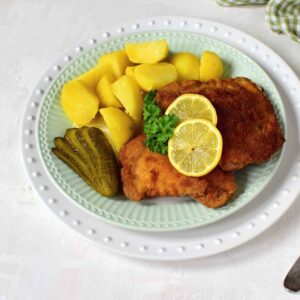
Traditional Czech Řízek
Ingredients
- 1 lbs pork collar (450 g)
- 1 cup breadcrumbs (120 g)
- 2 eggs
- ⅓ cup all-purpose flour (43 g)
- 1 teaspoon salt
- canola oil or lard
- lemon slices to garnish - optional
Instructions
- Cut the pork in slices no more than ½-inch thick.
- Put them on a chopping board and lightly pound each side with a tenderizer.
- Salt the pork on both sides.
Coating:
- Crack the eggs into a bowl and beat them with a fork (no blender). Salt the eggs lightly.
- Prepare flour and breadcrumbs, I used parchment paper.
- Coat each slice of meat in the following order: Firstly in the flour, then in beaten eggs, and finally in breadcrumbs.
Frying:
- Heat up a thick layer of fat in a frying pan.
- Fry the coated řízky until they turn golden brown, each side should take 3 to 4 minutes.
- Serve the finished řízky with boiled potatoes, coated in boiled butter. Garnish with a sprig of parsley and a wedge of lemon (optional).
Notes
- Makes about 4-6 slices of řízky.
- Before you start eating, squeeze the juice out of the lemon onto the řízek. Dobrou chuť!
DISCLAIMER: Because I come from Central Europe, my recipes are based on metric units such as grams or milliliters. Check out how I convert metric units to the U.S. system:
Conversion chartNutritional Estimate pro portion
You will find more Czechoslovakian dishes similar to řízek in the category Czech Main Courses.
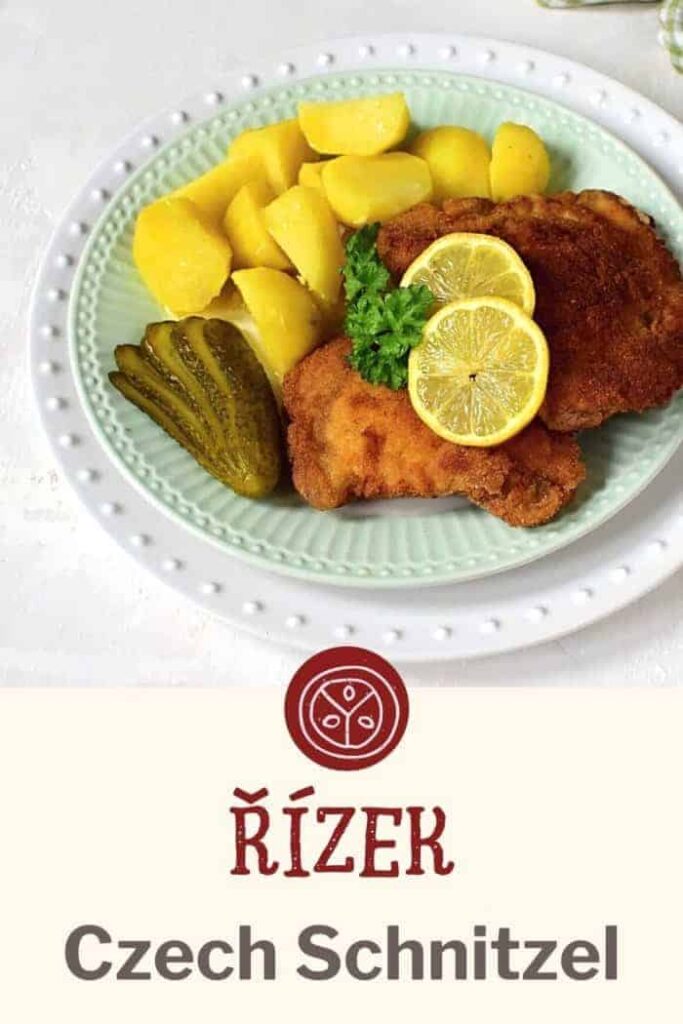


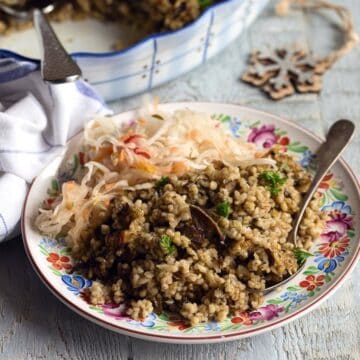
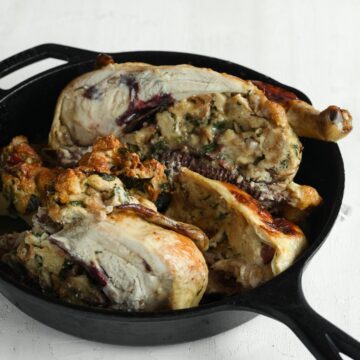
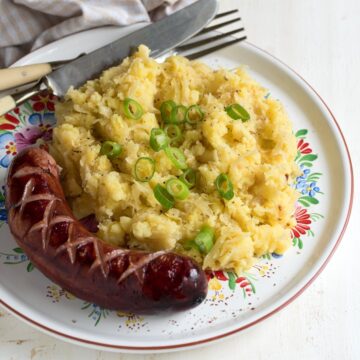

Peter
Oh my goodness, this was a delicious recipe! I have had various schnitzels (German and Iranian versions) but this was the first time I had it with pork and I loved it! The pork came out very tender and juicy, with a wonderfully crisp crust! I served it with lemon slices to squeeze on top, with boiled Yukon Gold Potatoes (topped with butter and sour cream) and a salad on the side. A wonderful weekend meal, perfect on this rainy day!!! Thanks for the lovely recipe, I will be trying another from your site this week sometime!! 🙂
Petra Kupská
Ahoj Peter, thank you so much for your kind and encouraging words! My dad used to make the best schnitzels in our house, and he liked to use pork chops the best. He always pounded the slice of pork thoroughly so that it was really thin. Often the řízek was so big it barely fit on the frying pan! Best wishes, Petra
Ashley
Schnitzel is a classic! I always enjoy making it with my family, and then having a good time eating it together. In my opinion, its crispiness pairs really well with french fries or boiled potatoes.
Petra Kupská
Ahoj Ashley, thank you for your comment 🙂 In the Czech Republic, schnitzel is most often accompanied by boiled or mashed potatoes. When we want to make the meal more festive, we serve řízek / schnitzel with potato salad (bramborový salát).
Annabel Birchak
Ahoj Petra! Thank you so much for making this blog! I am always looking for genuine Czech Recipes and yours are the truest!!! I have visited Czech Republic. My father is Czech and he lives in Brno currently with my brother. Today, I will try making veprovy rizek, but I have made your brambory salat many times and before the year is over, I plan to make my favorite Svíčková na smetaně with your recipe of course ;)!!!
Petra Kupská
Ahoj Annabel, thanks a lot for your lovely comment! I am happy you like Czech cuisine (and the recipes posted here on my blog as well 😉 Brno is a very nice city with rich cultural traditions and very kind people. I hope you enjoyed your stay there! And if you want any help with Svickova, feel free and contact me; I will be happy to help.
Best wishes, Petra
JF
Enjoyed looking over your recipes. Unfortunately for me, every summer when we visited my Czech grandparents, my grandmother felt obligated to cook only “American style” meals so I only ever had a very few Czech foods, but I understand from a cousin she was a whiz at baking Czech pastries as well, which she never did during the summers.
Petra Kupská
Oh, I hear you! 🙂 Grandmothers always try to do what they think is best for their loved ones. Next time, try to get your granny to cook something from traditional Czech cuisine. I'm guessing it might be pork roast and dumplings, a great Czech culinary treasure!